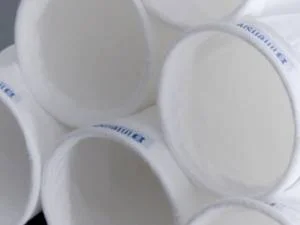Understanding Jet Dust Collection Systems
Jet dust collection systems are machines that help remove dust and particles from the air in factories and other industrial places. Their main job is to keep the air clean and safe for workers. These systems use jets of air to blow dust into a collection bag or container.
Maintaining clean air is very important. Dirty air can lead to health problems for workers. When dust builds up, it can cause breathing issues and other health concerns. Jet dust collection systems help prevent these problems by filtering out harmful particles from the air.
Here are some key points about the significance of jet dust collection systems:
- They protect workers’ health by reducing dust in the air.
- They improve air quality in the workplace.
- Clean air can lead to better productivity and fewer sick days.
- These systems help meet safety regulations in many industries.
Using a jet dust collection system is a smart choice for any industrial setting. It helps create a safer and healthier work environment.
Pulse Jet Technology: The Heart of Efficient Dust Collection
Pulse jet technology is important for efficient dust collection. It uses bursts of compressed air to clean filters. This helps keep the system running smoothly and effectively.
- Pulse jet technology works by sending short, strong bursts of air through the filters. This action removes dust and debris that build up on the filter surface.
- The application of pulse jet technology is mainly in dust collection systems. Factories and industries use it to keep their air clean and safe.
- Pulse jet cleaning enhances filter efficiency. Clean filters allow air to flow freely, which helps in trapping more dust particles.
- By keeping the filters clean, pulse jet technology extends their service life. This means the filters do not need to be replaced as often, saving money and time.
- Overall, pulse jet technology is key to having effective dust collection systems. It helps maintain a clean environment in various industries.
Key Components of a Pulse Jet Dust Collection System
A pulse jet dust collection system has key components that work together to keep air clean. These components include pulse jet valves, filter bags, a hopper, and a fan. Each part has a specific job, and they all help to improve air quality.
- Pulse Jet Valves: Pulse jet valves are important for cleaning the filter bags. When dust builds up on the bags, the valves release a burst of air. This air pushes the dust off the bags. This process keeps the bags working well and helps maintain airflow.
- Suodatinpussit: Filter bags are like nets that catch dust and dirt in the air. Air passes through the bags, and the dust gets trapped inside. Clean air then flows out. The filter bags need to be cleaned often to keep the system working efficiently.
- Hopper: The hopper collects the dust that falls from the filter bags. After the dust is cleaned from the bags, it drops into the hopper. The hopper stores the dust until it can be removed. This prevents dust from going back into the air.
- Fan: The fan pulls air into the system. It helps move the air through the filter bags and out of the system. The fan works continuously to ensure that air flows smoothly, keeping the area clean.
These components work together in a pulse jet dust collection system. The pulse jet valves clean the filter bags, which trap dust. The hopper collects the dust, and the fan keeps the air flowing. Together, they help maintain good air quality in a workspace.
Advantages of Pulse Jet Dust Collection Systems
Pulse jet dust collection systems have many advantages. They help keep the air clean in factories and workshops. These systems are known for their high collection efficiency. They can capture a large amount of dust and other particles from the air. This makes the workplace safer for workers.
Another benefit is low maintenance costs. Pulse jet systems do not need much upkeep. They are designed to work well for a long time without many repairs. This saves money for businesses in the long run.
Continuous operation is another key advantage. Pulse jet dust collection systems can work all the time without stopping. They clear dust from the air quickly, which keeps machines running smoothly. This means less downtime for equipment, leading to better productivity.
Here are some data points that show how effective pulse jet systems are:
| Ominaisuus | Pulse Jet Dust Collection Systems | Other Systems |
| Collection Efficiency | Up to 99% | 80% – 90% |
| Ylläpitokustannukset | Matala | Korkea |
| Operation Time | Continuous | Intermittent |
These points show that pulse jet dust collection systems are a great choice for many industries. They help improve air quality, reduce costs, and keep operations running smoothly.
Pulse Jet Dust Collector Manufacturers in India
Pulse Jet Dust Collector Manufacturers in India are important for keeping industrial spaces clean. They help remove dust and other particles from the air. Two leading manufacturers in India are Teral-Aerotech and StratGem Projects. Both companies offer high-quality products and services that help improve air quality in various industries.
- Teral-Aerotech: This company specializes in designing and manufacturing pulse jet dust collectors. They focus on creating efficient systems that reduce dust emission. Their products are suitable for industries like cement, food, and pharmaceuticals. Teral-Aerotech aims to provide reliable solutions that meet customer needs.
- StratGem Projects: StratGem Projects also manufactures pulse jet dust collectors. They offer a wide range of dust collection systems. Their products help industries comply with environmental standards. StratGem Projects focuses on innovation and customer satisfaction. They provide customized solutions for specific dust control challenges.
These manufacturers play a vital role in improving air quality in industrial settings. They help businesses operate safely and efficiently while protecting the environment.
Applications of Pulse Jet Dust Collection Systems
Pulse jet dust collection systems are important in many industries. They help keep the air clean by removing dust and other particles. These systems are used in various places like food processing, pharmaceuticals, and metalworking.
In the food processing industry, these systems collect dust from milling and grinding operations. They help keep the workspace safe and clean. This is important because it prevents contamination of food products.
In the pharmaceutical industry, pulse jet dust collection systems are used to control dust from powders and chemicals. These systems ensure that workers are safe and that products are pure. They help meet strict health and safety regulations.
In metalworking, these systems remove dust created during cutting, grinding, and welding. They protect workers from harmful particles and help keep machines running smoothly.
Here are some specific applications and benefits of pulse jet dust collection systems:
- Elintarvikkeiden jalostus: They collect flour dust during milling, which helps prevent explosions and keeps the area clean.
- Farmaseuttiset tuotteet: They control dust from active ingredients, ensuring worker safety and product quality.
- Metallintyöstö: They capture metal shavings and dust, which keeps the environment safe and improves air quality.
Using pulse jet dust collection systems is essential. They improve safety, protect health, and help industries run better.
Pulse Jet Type Bag Filters: An In-Depth Look
Pulse jet type bag filters are important in dust collection systems. They help keep the air clean by removing dust and other small particles. These filters use a special design that allows them to work efficiently.
The design of pulse jet type bag filters includes a series of bags. These bags are made of fabric and hang in a filter chamber. When dust-filled air enters the chamber, the dust gets trapped in the bags. The clean air then flows out of the filter.
The function of pulse jet type bag filters is to clean the bags. A pulse of compressed air blasts through the bags. This blast removes the dust from the bag surface and allows it to fall into a collection bin. This cycle happens regularly to maintain the filter’s effectiveness.
Pulse jet type bag filters play a key role in dust collection systems. They are used in factories, power plants, and other industries where dust is produced. These filters help protect the health of workers and improve air quality.
The advantages of pulse jet type bag filters include:
- High Efficiency: They trap a large amount of dust and particles.
- Matala huolto: The self-cleaning feature reduces the need for manual cleaning.
- Kustannustehokas: They help save money on energy and maintenance costs.
- Monipuolisuus: They can handle different types of dust and can be used in various industries.
Overall, pulse jet type bag filters are vital for maintaining clean air and protecting health in environments with dust.
Designing an Efficient Pulse Jet Dust Collection System
Designing an efficient pulse jet dust collection system is important for keeping air clean in a workspace. This system helps remove dust and other particles from the air. Here are some guidelines to help in designing one.
- Understand Airflow Needs: Start by figuring out how much air the system must move. This helps in creating a system that works well.
- Choose the Right Duct Size: Select the right duct size for the airflow. If the ducts are too small, the system will struggle to move air. If they are too big, it will waste energy.
- Select Filters Carefully: Filters trap dust and dirt. Choose filters that match the type of dust in the air. The right filter helps the system run better and last longer.
- Plan for Maintenance: Design the system for easy maintenance. It should be simple to check and clean the filters and ducts.
- Consider Noise Levels: Dust collection systems can be loud. Think about how to reduce noise, like using soundproofing materials.
- Seek Professional Help: It is always a good idea to get advice from experts. They can provide insights and help avoid mistakes in the design.
Following these guidelines can help create a pulse jet dust collection system that works well and keeps the workspace clean.
Common Challenges and Solutions
Common challenges can affect a home’s heating and cooling system. These issues can make the system less efficient and lead to higher energy bills. Here are some common problems and their solutions.
- Inadequate Airflow: Inadequate airflow can make rooms feel too hot or too cold. This issue often happens when vents are blocked or the system is dirty.
Solution: Regularly check and clear vents. Clean the system’s components to ensure good airflow. - Suodattimen tukkeutuminen: Filter clogging is another common issue. A dirty filter can block air from flowing properly. This can cause the system to work harder, which wastes energy.
Solution: Change or clean the air filter every one to three months. This keeps the system running smoothly and efficiently. - System Leaks: System leaks can occur in the ductwork or around the unit. These leaks let air escape, which reduces efficiency.
Solution: Inspect the ductwork and seals for any leaks. Use duct tape or professional help to seal leaks properly.
By addressing these challenges, a homeowner can keep their heating and cooling system working well. Regular maintenance can help prevent these issues from becoming serious problems.
Case Study: Successful Implementation of a Pulse Jet Dust Collection System
A pulse jet dust collection system can help many industries. One real-world example shows how it was implemented successfully. This case study looks at a factory that needed cleaner air and less dust.
- The Challenge: The factory had a problem with dust. Workers reported that dust made it hard to see and breathe. The dust also affected the machines. The factory decided to find a solution. They chose to use a pulse jet dust collection system.
- The Planning Phase: The factory first planned the project. They looked for experts in dust collection. The experts studied the factory’s layout. They found the best places to put the dust collectors. The factory made a plan to install the system without stopping work.
- The Installation Phase: Next, the factory installed the pulse jet dust collection system. Workers set up the machines in the planned spots. They connected the system to the factory’s existing equipment. The installation was quick. Workers could keep doing their jobs while the system went in.
- The Testing Phase: After installation, the factory tested the system. They checked if it collected dust as expected. The results were great. The pulse jet system removed a lot of dust from the air. Workers noticed cleaner air right away.
- The Outcomes: The factory saw many benefits. Air quality improved a lot. Workers felt healthier and happier. Machines ran better without dust. The factory also saved money on cleaning costs. The pulse jet dust collection system made a big difference.
This case study shows how a pulse jet dust collection system can work well. With careful planning and good installation, it can solve dust problems in factories.
Johtopäätös
Jet dust collection systems are important for keeping a work environment safe and healthy. These systems help remove dust and other harmful particles from the air. When dust builds up, it can cause breathing problems and other health issues. A clean workspace not only protects workers but also improves productivity.
It is smart to get help from experts like Intensiv-Filter Himenviro. They can provide tailored solutions that fit specific needs. Professional advice can ensure the right system is chosen and installed correctly. This helps create the best working conditions.



